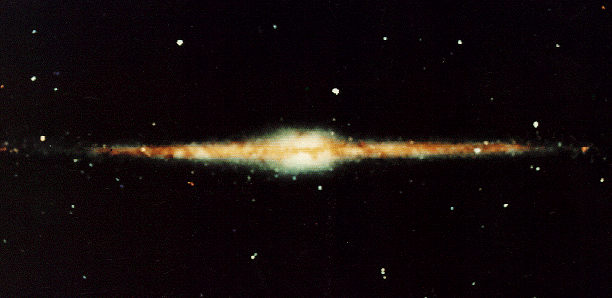Astronomy Picture of the Day
Discover the cosmos! Each day a different image or photograph of our fascinating universe is featured, along with a brief explanation written by a professional astronomer.
September 8, 1995

The Milky Way's Centre
Credit:
NASA,
COsmic Background Explorer (COBE) Project